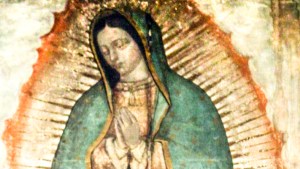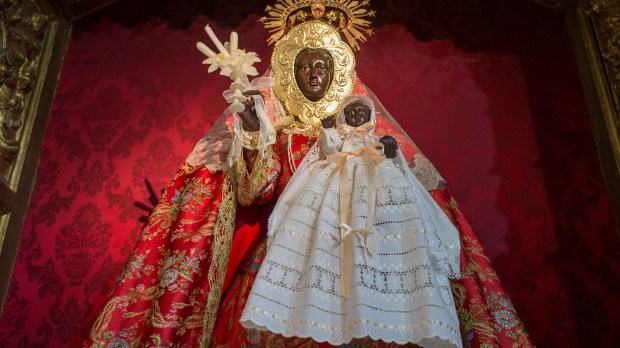In the heart of Extremadura (Spain) there is a sanctuary that has long held a special place in the hearts and souls of pilgrims: the shrine of Our Lady of Guadalupe. And yes, while the Virgin of Guadalupe is known in Mexico as the country’s patron saint and Empress of the Americas, the Spanish Guadalupe has a history that predates its Mexican counterpart by centuries.
The origins of the Spanish Guadalupe can be traced back to the late 13th century, when a shepherd named Gil Cordero made an extraordinary discovery while tending his flock along the banks of the Guadalupe (also known as Guadalupejo) River – hence the name of the Virgin’s image. Amidst the dense vegetation, he stumbled upon a statue of the Virgin Mary, carved from dark wood and radiating an aura of holiness that immediately captured his attention. The shepherd believed the statue had been hidden during the Moorish conquest of the Iberian Peninsula and eagerly shared his find with the local community.
Word of the statue spread like wildfire, and soon pilgrims were flocking to the site, seeking the Virgin’s intercession and blessings. Their fervor reached a new level in 1340, when King Alfonso XI, victorious in the Battle of Río Salado (also known as the Battle of Tarifa) against the Moors, attributed his triumph to the Virgin’s patronage. In gratitude, he commissioned the construction of a grand Hieronymite monastery to house the revered statue and serve as a center for pilgrimage and spiritual growth.
Completed in 1389, the monastery flourished over the next century, becoming a beacon of faith and learning that attracted scholars and theologians from all over Spain. The image of Our Lady of Guadalupe, affectionately known as La Negrita (“The Little Black One”) because of her dark complexion, became a symbol of Spanish identity and a source of inspiration for generations of believers.
The name “Guadalupe” and the legend of the image.
The etymology of the name “Guadalupe” itself is still under discussion. Some believe it comes from the Arabic word “wadi” and the Latin “lupus,” meaning “river” and “wolf,” respectively – as in “the wolves’ river.” Regardless of its origin, the name Guadalupe has become inextricably linked with Marian devotion in Spain, especially in the region of Extremadura.
The story of the statue itself is literally the stuff of legend. An ancient legend claims that the image would have been created by St. Luke the Evangelist in a 1st-century Palestinian sculpture workshop. Over the centuries, it was venerated in Achaea and in different Byzantine churches. Pope Gregory the Great later gave the sculpture to St. Leander, archbishop of Visigothic Seville. Leander then enshrined the image in a hermitage on the outskirts of the city, but during the Moorish invasion of 711, the Christians of Seville hid the image in a box near the River Guadalupe, nestled in the Villuercas Mountains at the foot of the Altamira range. The legend goes on to say that the Virgin Mary appeared three times to the shepherd Gil Cordero, and instructed him to gather the local bishop and build a church on the site where she was found. The bishop, who was skeptical at first, was finally convinced of the authenticity of the apparition by several miraculous occurrences, and went with Gil Cordero to find the image of the Virgin.



